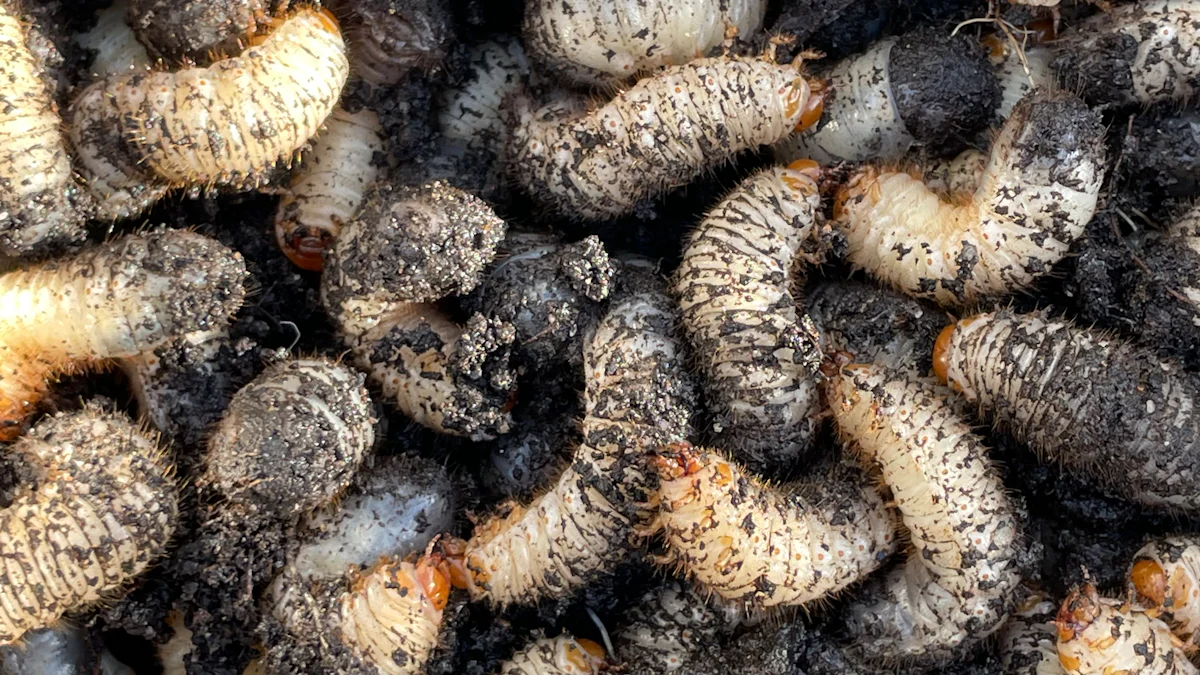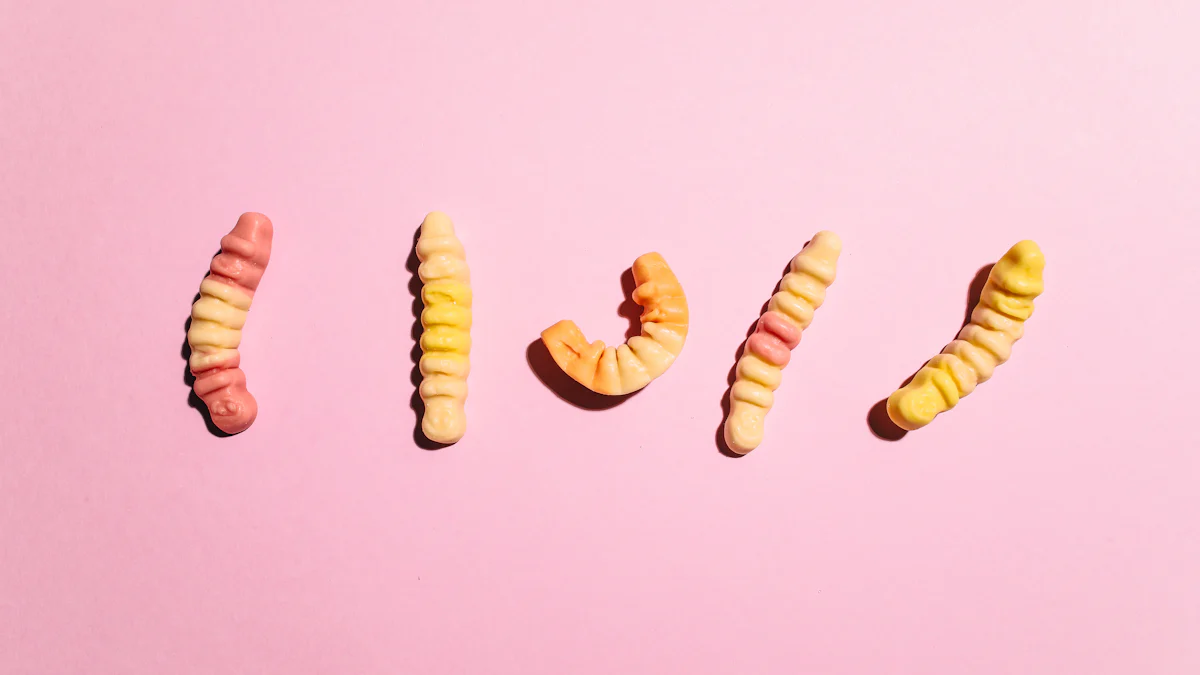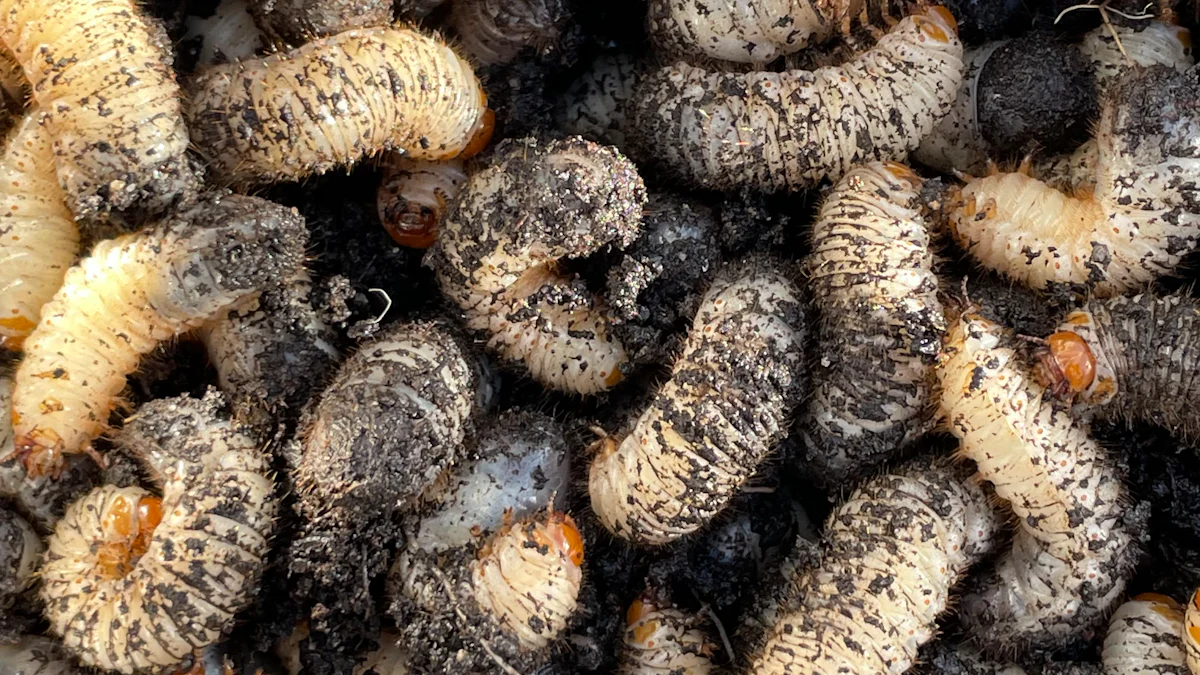
Proper hydration is crucial for the well-being of mealworms. You might wonder why it’s so important. Well, just like any living creature, mealworms need moisture to thrive. Without it, they can become dehydrated, leading to poor health and even death. Dehydration affects their protein content, which is vital for their growth and development. By ensuring your food mealworms receive adequate moisture, you help them maintain optimal health and productivity. Remember, a well-hydrated mealworm is a happy mealworm!
Key Takeaways
- Mealworms require proper hydration to thrive; without it, they can suffer from dehydration, affecting their health and growth.
- Fresh fruits and vegetables, such as carrots and potatoes, are excellent moisture sources that also provide essential nutrients.
- Regularly check for signs of dehydration in mealworms, such as shriveling or reduced activity, and ensure they have access to moisture-rich foods.
- Consider using water gels like Thirsty Cricket as a safe hydration method to prevent drowning, which can occur with water dishes.
- Maintain a clean habitat by removing uneaten food every few days to prevent mold growth, which can harm mealworms.
- Monitor humidity levels in the mealworm habitat using a humidity meter and ensure proper ventilation to prevent excess moisture.
- Replace moisture sources every 2-3 days to keep the environment fresh and healthy for your mealworms.
Understanding Mealworm Hydration Needs
Importance of Hydration
You might not realize it, but mealworms need water just like any other living creature. Hydration plays a crucial role in their growth and development. When mealworms have access to water or high-moisture foods, they grow faster and healthier. Fresh plant materials, like carrots or potatoes, not only provide moisture but also deliver essential micronutrients and bioactive phytochemicals. These nutrients are vital for their well-being.
Mealworms absorb moisture from the air through their rectum, which is pretty fascinating. However, they still need water through their diet to thrive. Without proper hydration, mealworms can suffer from dehydration, affecting their protein content. This can lead to stunted growth and poor health. So, ensuring your food mealworms get enough moisture is key to keeping them happy and productive.
Identifying Dehydration in Mealworms
Spotting dehydration in mealworms isn’t too tricky if you know what to look for. Dehydrated mealworms often appear shriveled or dry. They might move less and seem less active than usual. If you notice these signs, it’s time to check their moisture sources. Make sure they have access to fresh vegetables or fruits, which can provide the necessary hydration.
Keeping an eye on their environment is also important. Mealworms thrive in a clean and well-maintained space. Regularly replace their bedding and remove any uneaten food to prevent mold and excess moisture issues. By doing so, you create the best conditions for your food mealworms to grow and stay healthy.
Suitable Moisture Sources for Food Mealworms

Ensuring your food mealworms stay hydrated is essential for their growth and health. You might wonder what the best sources of moisture are. Let’s dive into some excellent options that will keep your mealworms happy and thriving.
Fruits and Vegetables
Fruits and vegetables are fantastic sources of moisture for mealworms. They not only provide hydration but also offer essential nutrients.
Best Fruits for Hydration
When it comes to fruits, you have several great choices. Apples and pears are popular because they have high water content. These fruits are easy to find and can be sliced into small pieces for your mealworms. Bananas are another option, offering both moisture and a bit of sweetness. Just remember to remove any uneaten fruit to prevent mold.
Best Vegetables for Hydration
Vegetables are a staple in a mealworm’s diet. Carrots and potatoes are top picks. They provide the necessary moisture without the risk of drowning, which can happen with water dishes. Sweet potatoes and squash are also excellent choices, offering both hydration and nutrients. Regularly replace these veggies to ensure freshness and prevent spoilage.
Alternative Moisture Sources
If you’re looking for other ways to hydrate your mealworms, consider these alternatives.
Water Gels
Water gels, like Thirsty Cricket, are a safe and effective way to provide moisture. These gels offer hydration without the risk of drowning, making them a great addition to your mealworm care routine. Simply place a small amount in their habitat, and they’ll have access to moisture whenever they need it.
Moisture-Rich Substrates
Moisture-rich substrates can also help maintain hydration levels. These substrates absorb water and release it slowly, creating a humid environment. This method is particularly useful if you’re raising a large number of mealworms. Just ensure the substrate doesn’t become too wet, as excess moisture can lead to mold growth.
By providing these moisture sources, you create an ideal environment for your food mealworms. From selecting the right fruits and vegetables to using innovative alternatives like water gels, each step ensures your mealworms remain healthy and productive. Remember, a well-hydrated mealworm is a thriving mealworm!
Frequency and Quantity of Moisture Provision
Ensuring your food mealworms receive the right amount of moisture is crucial for their health and growth. But how often should you provide this moisture? And how much is enough? Let’s explore these questions to help you maintain a thriving mealworm habitat.
How Often to Provide Moisture
You should provide moisture to your mealworms regularly to keep them hydrated. A good rule of thumb is to offer fresh moisture sources, like fruits or vegetables, every 2-3 days. This frequency ensures that your mealworms have a consistent supply of water, which is essential for their survival. Regularly replacing moisture sources also prevents spoilage and mold growth, keeping the environment clean and healthy.
If you’re using alternative moisture sources like water gels, check them daily. Ensure they remain moist and replace them as needed. Water gels are a convenient option because they provide a steady moisture supply without the risk of drowning.
Determining the Right Amount
Finding the right amount of moisture for your mealworms can be a bit of trial and error. Start with small amounts of fruits or vegetables, like a few slices of carrot or apple. Observe how quickly your mealworms consume these moisture sources. If they disappear quickly, you might need to increase the quantity slightly.
Avoid overloading the habitat with too much moisture. Excess moisture can lead to mold and other issues. Instead, aim for a balance where the mealworms have enough to stay hydrated but not so much that it creates a damp environment. Remember, mealworms can absorb moisture from their food, so providing a variety of moisture-rich options helps them thrive.
By maintaining a regular schedule and monitoring the amount of moisture you provide, you create an optimal environment for your food mealworms. This approach ensures they stay healthy and productive, contributing to their overall well-being.
Preventing Mold and Excess Moisture Issues

Keeping your mealworms healthy involves more than just providing moisture. You also need to prevent mold and excess moisture, which can harm your mealworms. Let’s explore how you can maintain a clean and balanced environment for them.
Importance of Removing Uneaten Food
Removing uneaten food is crucial in preventing mold growth. When fruits and vegetables sit too long, they start to rot. This creates a breeding ground for mold, which can spread quickly. Mold not only affects the food but can also harm your mealworms. It can lead to health issues and even death.
To keep mold at bay, check your mealworm habitat regularly. Remove any uneaten food every couple of days. This simple step helps maintain a clean environment. It also ensures your mealworms have fresh food, which is essential for their hydration and nutrition.
Tips for Maintaining Optimal Humidity Levels
Maintaining the right humidity level is key to preventing excess moisture. Mealworms need some humidity, but too much can lead to problems. High humidity encourages fungi growth, which can attack and kill mealworms. You want to avoid this at all costs.
Here are some tips to help you maintain optimal humidity levels:
-
Use a Humidity Meter: A humidity meter can be a valuable tool. It helps you monitor the humidity in your mealworm habitat. You can find these meters online or at pet care stores. They often measure both humidity and temperature, giving you a complete picture of the environment.
-
Ventilation: Ensure your mealworm container has proper ventilation. Good airflow helps regulate humidity levels. It prevents the buildup of excess moisture, reducing the risk of mold.
-
Substrate Management: Choose a substrate that absorbs moisture well. This helps maintain a balanced environment. Regularly check the substrate for dampness and replace it if necessary.
By following these tips, you create a safe and healthy space for your mealworms. You ensure they have the right conditions to thrive, free from mold and excess moisture. Remember, a clean and well-maintained habitat is key to successful mealworm care.
To wrap things up, ensuring proper hydration for your food mealworms is essential for their health and growth. Remember to provide fresh fruits and vegetables like carrots and potatoes every few days. This not only hydrates them but also prevents drowning, which can occur with water dishes. Consider using gel water sources like Thirsty Cricket for a safe hydration method. Keep an eye on their environment, removing uneaten food to prevent mold. By monitoring and adjusting your hydration practices, you create the best conditions for your mealworms to thrive.
FAQ
How can mealworms get hydration?
Mealworms primarily get their hydration from fruits and vegetables. These natural sources provide the moisture they need without the risk of drowning, which can happen if you use a water dish. It’s best to offer vegetables and fruits with high water content to keep your mealworms healthy.
Why is it important to provide fresh vegetables to mealworms?
Fresh vegetables play a crucial role in mealworm hydration. They are rich in water, allowing mealworms to absorb moisture safely. Nutritious options like carrots, broccoli, sweet potatoes, and squash are excellent choices. These vegetables not only hydrate but also provide essential nutrients.
How can mealworms be hydrated effectively?
To hydrate mealworms effectively, you should provide moisture-rich foods and consider using a gel water source like Thirsty Cricket. This gel offers a safe way for mealworms to access water without the risk of drowning. Place it in a low container on top of the bedding for easy access.
What is the best way to provide hydration to mealworms?
The best way to hydrate mealworms is by using a gel water source such as Thirsty Cricket. Avoid using a regular water dish, as mealworms are not good swimmers and could drown. Placing the gel in a low container on top of their bedding ensures they stay hydrated safely.
Why is it important to provide hydration to mealworms?
Hydration is vital for mealworms to thrive. Without adequate moisture, they can become dehydrated, affecting their health and growth. Using a gel water source like Thirsty Cricket ensures they have enough moisture. This method prevents drowning and keeps your mealworms in optimal condition.
How often should I change the fruits and vegetables for mealworms?
You should replace the fruits and vegetables every 2-3 days. This frequency prevents spoilage and mold growth, ensuring your mealworms have fresh and safe food sources. Regularly checking and replacing these items helps maintain a clean and healthy environment.
Can I use any fruits and vegetables for mealworm hydration?
Not all fruits and vegetables are suitable for mealworm hydration. Choose those with high water content, like apples, pears, carrots, and potatoes. Avoid citrus fruits, as they can be too acidic for mealworms. Always remove uneaten portions to prevent mold.
What should I do if I notice mold in the mealworm habitat?
If you spot mold, remove the affected food and bedding immediately. Mold can harm mealworms, so maintaining a clean environment is crucial. Regularly check the habitat and replace any moldy or spoiled items to keep your mealworms healthy.
How can I maintain the right humidity level for mealworms?
To maintain optimal humidity, ensure proper ventilation in the mealworm container. Use a humidity meter to monitor levels and choose a substrate that absorbs moisture well. Regularly check and adjust these factors to prevent excess moisture and mold growth.
Are there any other tips for successful mealworm care?
Yes, always keep the mealworm habitat clean and well-maintained. Remove uneaten food regularly and monitor moisture levels. By following these practices, you create the best conditions for your mealworms to thrive, ensuring they remain healthy and productive.


